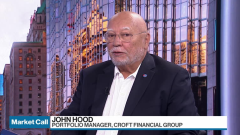Jun 6, 2024
Forget US Yield Curve Bets, Look to Canada Instead, Says BofA
, Bloomberg News

(Bloomberg) -- As the Treasury yield curve continues to flash its longest-ever warning, Bank of America Corp. says betting on rate shifts in Canada is the better play.
Their call comes as Thursday marks the 482nd consecutive day that yields on two-year Treasuries have traded above those on 10-year notes — oft considered a herald of a coming recession. That span surpasses the previous longest inversion in the 1980s, when then-Federal Reserve Chair Paul Volcker was engineering rate hikes to rein in double-digit inflation. For those wagering rates will return to their natural order, look first to Bank of Canada, BofA strategists urged.
“The curve inversion is a function of Fed cutting expectations — the slower the Fed cuts, the longer markets can maintain expectations for additional cuts in the future,” strategists including Ralph Axel and Katie Craig wrote in a report. “Prospects might be better on the Canadian curve vs the US curve as the BOC may be able to ease faster or guide more dovish than the Fed over the next 6 months.”
Recent messaging from Fed policymakers has fueled bets that further rates hike are off the table, and that the US yield curve might “dis-invert” or steepen. However, the strategists warned, “Not so fast. Even if it does steepen, we think the curve may not overcome high costs of carry and roll.”
Overnight funding rates “are above bond yields, funded Treasury longs have negative carry,” they argued, and beating the carry costs — or the price to hold bonds and then roll over into new ones — will require more aggressive Fed easing than currently priced in.
A better alternative would be to simply head over to Canada, where the central bank will likely ease its monetary tightening faster than their American counterpart. With cut momentum already built up in Canada, the stickier services inflation in the US could keep the Fed higher for longer, the analysts argued.
That policy divergence means traders would be better off betting that Canadian 10-year’s yield will steepen, they said, while wagering on the US two-year versus 10-year yield flattening can help diversify some risks.
The analysts reasoned that the market is currently underestimating the Bank of Canada’s ability to diverge from the Fed, and that once the easing cycles get underway, the so-called terminal rates of the Fed and BOC cycles could move closer.
“If the gap between the 2.9% terminal rate in CAD and the 3.6% terminal in the US gets smaller, which is what history suggests, we think it would lead to relative steepening of the CAD curve vs the US curve,” they added.
--With assistance from Ye Xie.
©2024 Bloomberg L.P.






